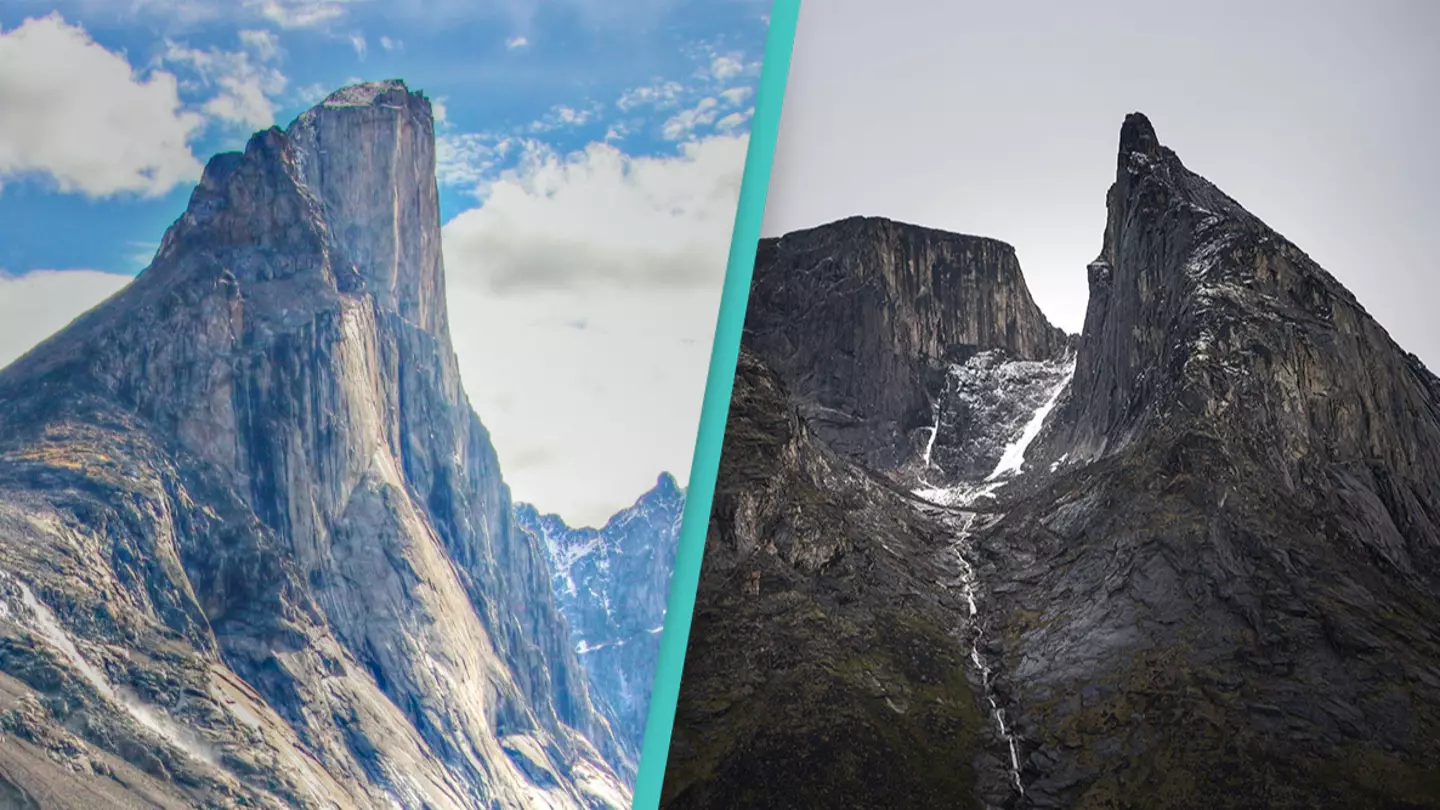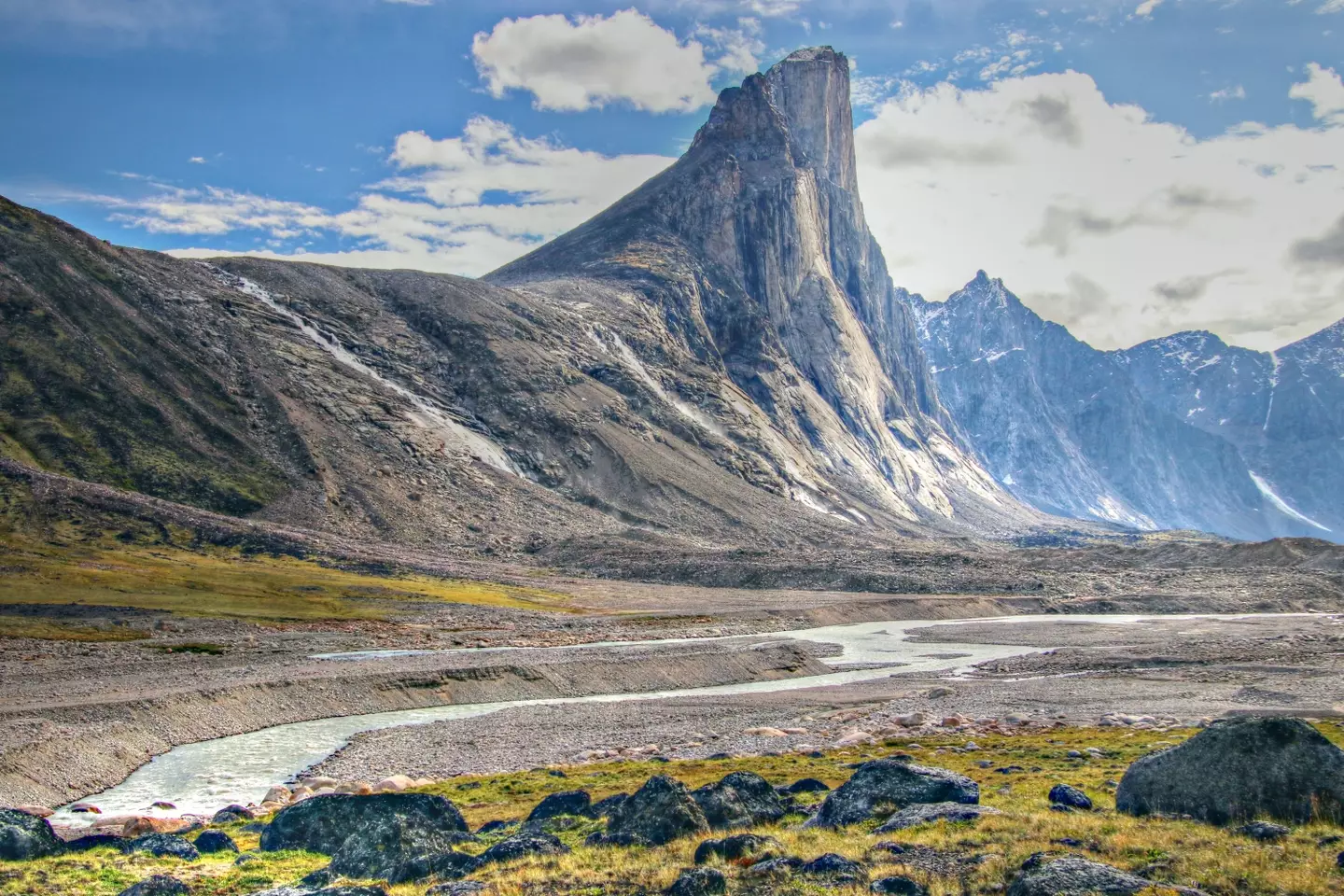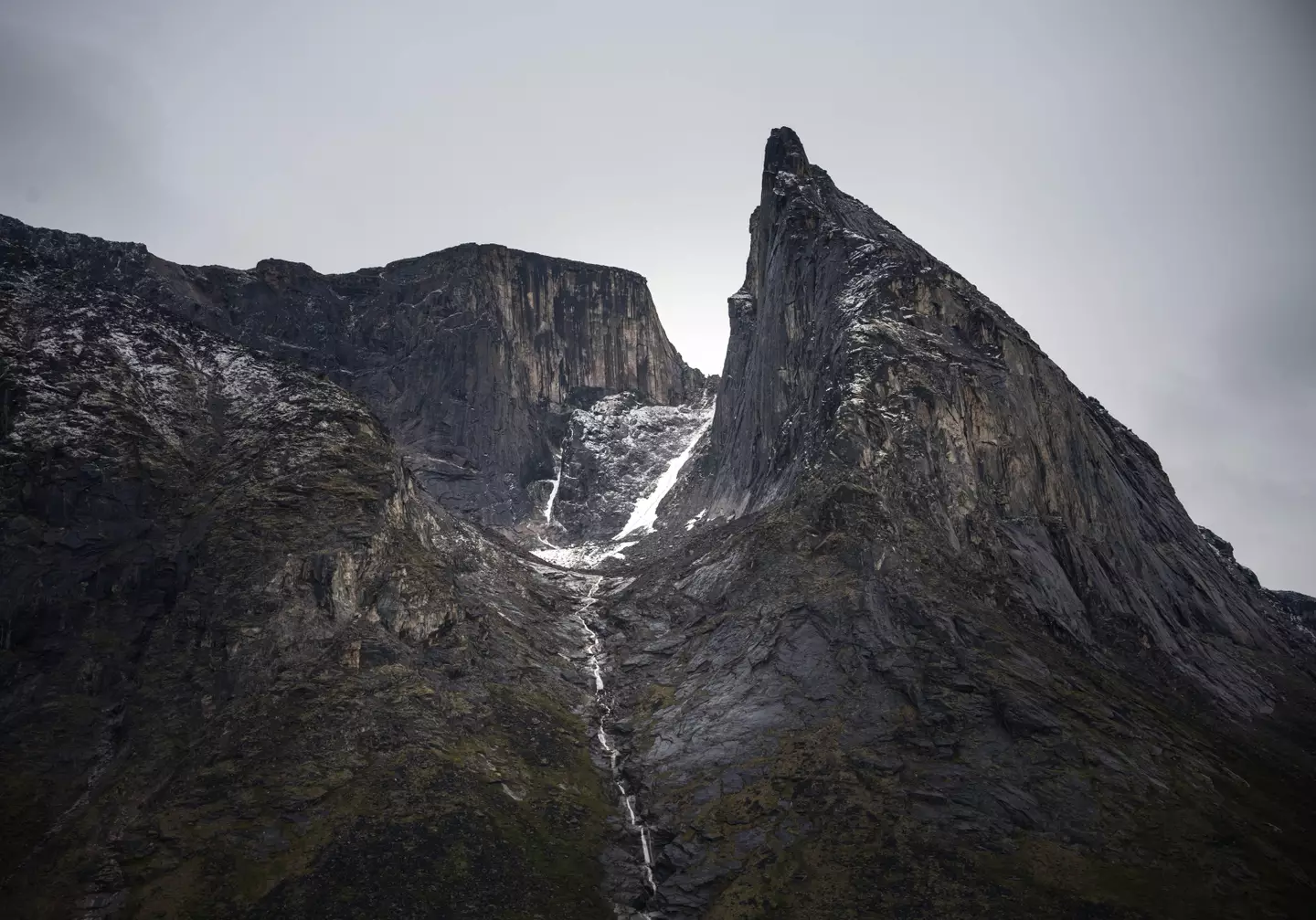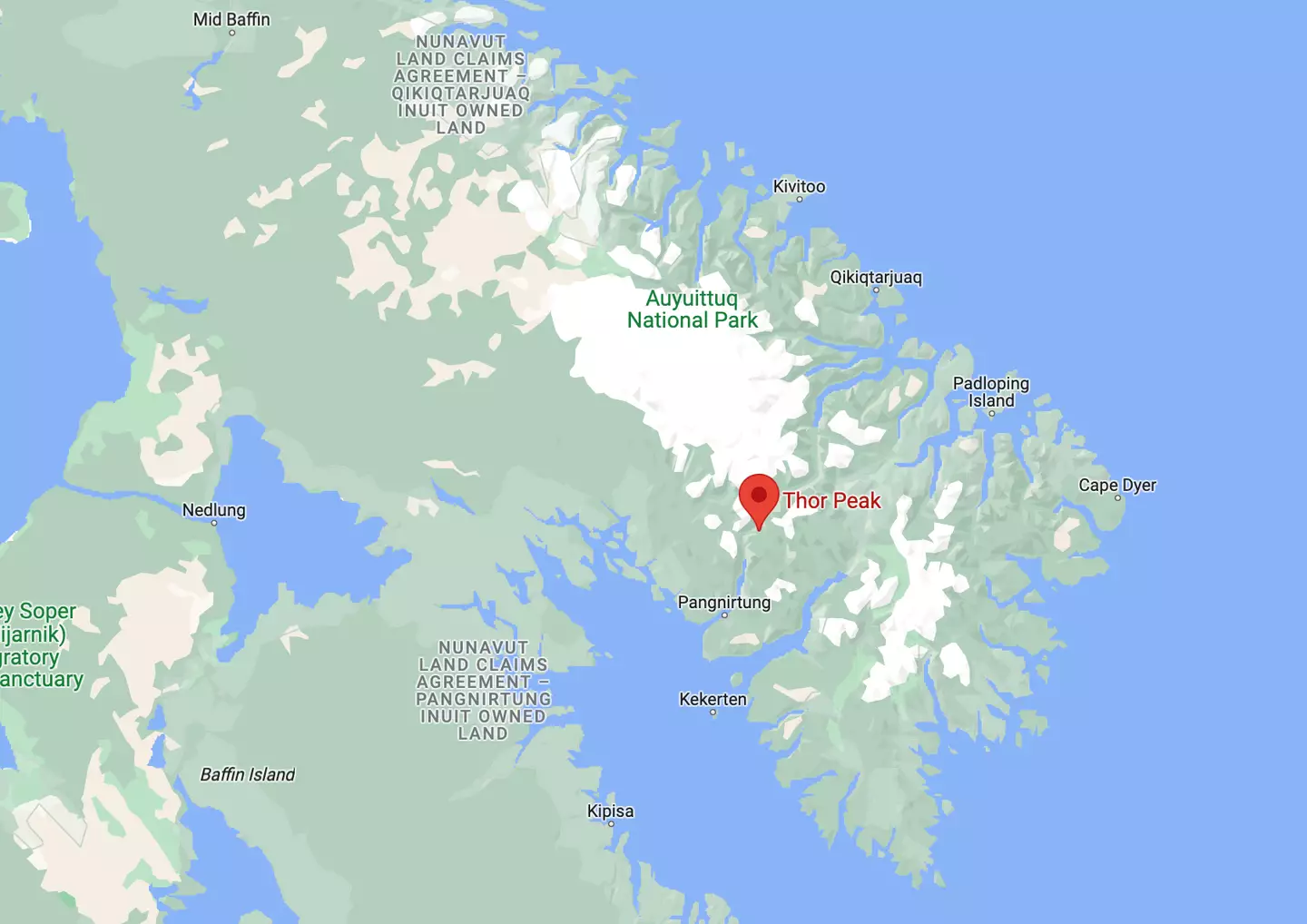
A mountain named after the Norse thunder lives up to its imposing name by being the world’s largest vertical drop.
Mount Thor, which is also known as Thor Peak, Qaisualik 'huge bedrock' or Kigutinnguaq 'tooth-like' in the Inuktitut language, is known for being absolutely terrifying.

Located in Auyuittuq National Park on Baffin Island, Nunavut, Canada, the mountain has an elevation of 1,675m (5,495 ft) and it has a vertical drop of 1,250m (4,100 ft), meaning its cliff face drops straight downwards and curves back up in a U-shape for anyone unlucky enough to fall down it.
Advert
Mount Thor’s overhang is at an average angle of 115 degrees vertically, making it the longest freefall downwards without hitting another object. It would take around 26 seconds at terminal velocity before the person would land on anything, which covers over a kilometre of distance.
It would take a miracle for people to even find Mount Thor in Auyuittuq National Park because this area in northern Canada is one of the world’s most under-explored wildernesses. It’s extremely remote and it would probably take intervention from Thor himself to get you to the top.

Despite the remote location, Mount Thor is popular among the bravest thrill-seekers. Located within the Arctic Circle, the national park is also a sight to behold with fjords, glaciers and an array of jagged mountains. The national park’s name roughly translates in English to 'the place that never melts' - so take that as you will.
Advert
The remote locations means only a few people have conquered it, as climbing this humongous mountain is no picnic. There have been over 30 failed summit attempts. In 1953, Pat Baird led the 1953 geophysical expedition during which Hans Weber, J. Rothlisberger and F. Schwarzenbach all climbed the North Tower of Mount Asgard inn Auyuittuq National Park. It wasn’t until 1985 when a four-person team went on a 33-day trek to climb Mount Thor’s mind-blowing vertical face.

Earl Redfern, John Bagley, Eric Brand and Tom Bepler were the four who became first to ascend the West Face and three years later, Jason ‘Singer’ Smith became the first person to complete an ascent solo.
Mount Thor came to be as a result of thousands of years of glacial erosion, which created a U-shape that can also be seen in other glacial rock formations. Consisting of solid granite, the rock making up Mount Thor ranges in age from 570 million years to 3.5 billion years, making it some of the oldest rock on earth.
